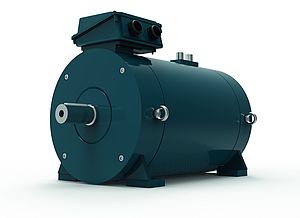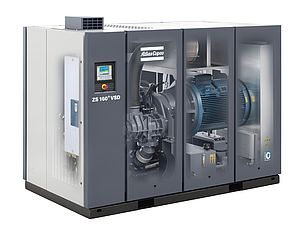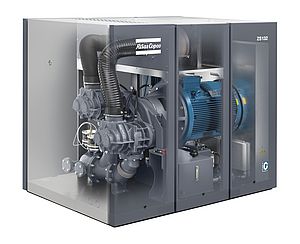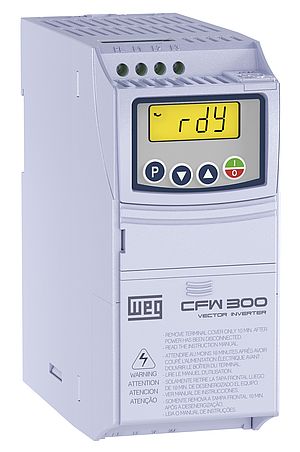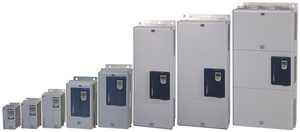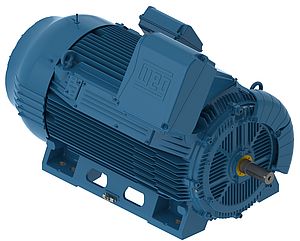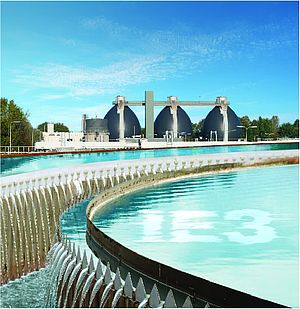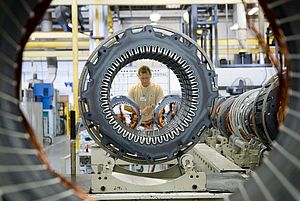The world’s largest industrial shredder is a Lynxs unit capable of handling 450 end-of-life vehicles an hour, operated by the Sims Group Ltd. at Associated British Ports’ (ABP) of Newport in the UK.
At the heart of the Lynxs shredder is a 40 tonne, 6,865KW, 14-pole (420rpm) high voltage electric motor. Designed in conjunction with Sims Metal, the 11KV wound rotor induction motor drives the hammers that crush the end-of-life vehicles and other scrap metal. Connected directly to the national electricity supply grid, the motor is watercooled and has a specially reinforced frame to handle the exceptionally heavy thrust loads, which can reach 116 tonnes on the motor drive end bearing. The Lynxs shredder is part of a €11 million Euro investment in the ABP Newport Terminal by Sims Group, the Australian owned international metals-recycling company. Capable of processing 350 tonnes of metal an hour, it is the latest design, allowing for improved yield of all metals.
Stuart Wilcox is the Group Engineering Manager for Sims Metal in the UK and was responsible for assessing exactly which motor best suited their requirements for the megashredder project. He takes up the story. “The traditional limiting factor on large shredders is the drive motor: as the shredding process demands so much torque, with a continuously varying motor current up to 2.5p.u. On our design however, we have reversed this situation, the WEG motor being capable of producing more torque than we need and with an increased thermal capacity. The reason for this is the design produced by WEG, following a visit to their design and manufacturing facilities in Brazil. We knew the extreme demands of our industry: they knew the capabilities of their motors. We started with a clean sheet of paper and put these two capabilities together, with the result that we have a motor that meets and even exceeds all of our design specifications.”
“The problems we faced in the design of the motor were many: the vibration from the shredding operation combined with the 116 tonnes of thrust load on the motor drive end bearing meant that a special reinforced frame with six foot fixings, rather than the normal four, had to be designed. Added to this, the two water coolers needed to be removable from the top of the machine without removing the overall cover in order to minimise downtime. Also, in view of the large amount of dust and dirt in the atmosphere around the shredder, we came up with a new air filtration system to help motor reliability; and again to minimise downtime, we designed the motor so that easy access could be gained to the slipring enclosure.”
“Having finalised the electrical and mechanical specification of the motor, we then turned to the control equipment: the support package required to operate and optimise the motor operation. Working with WEG UK, we identified a package, which included a power factor correction capacitor bank; switchgear for the main motor stator; state-of-the-art motor management and power factor correction control relays, and a liquid regulator with cooler system for the rotor circuit.
“The power factor correction bank is permanently connected to the 11KV motor terminals via a power factor management relay to ensure that the motor power factor is always maximised. The second part of the control package, the Liquid Regulator, is connected to the motor rotor circuit and basically involves inverter fed, motor driven control rods in electrolyte. As the load decreases or increases on the motor, the rods respectively raise and lower into the electrolyte, thus changing the motor rotor resistance and, consequently, the motor torque capability. This control philosophy ensures that the motor always operates at its optimum during all shredding operations. Also helping in this respect is a water-cooled heat exchanger housed on the machine hall roof this cools the electrolyte in the tank, particularly when the motor is operating in an overload condition with maximum slip.”
Fed by a large inclined conveyor, the high voltage motor sits in an elevated machine hall. The primary crushing operation which it performs is complemented by secondary operations using sizing grids for sorting combined ferrous and non-ferrous metals; magnetic stations for separating the metals; hand picking stations for removing metals such as copper, and Cyclone Fan stations that use high speed airflow to sort heavy materials from light.
The Cyclone stations employ two WEG 315KW, 6 pole motors; the second largest motors on the Lynxs shredder after the 11KV machine. They are controlled by WEG CFW09 variable speed drive systems, which provide the necessary fan control to sort out such materials as plastics, rubber, carpet fibre and glass. The majority of these materials are sent for recycling by Sims Metal. In contrast, the bulk material, known as fragmentised metal, which is separated by the main shredder operations, is exported and sold all over the world.






